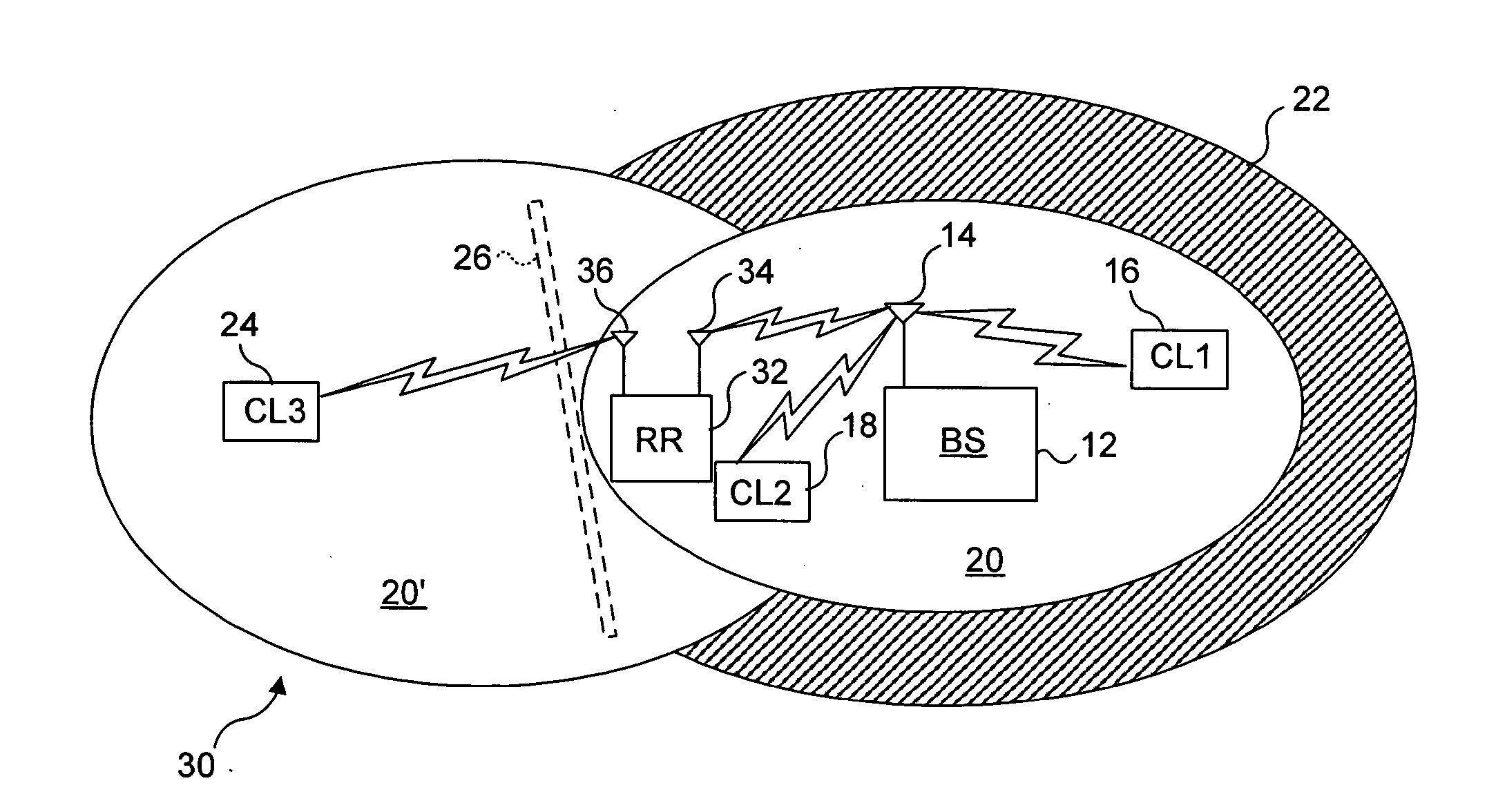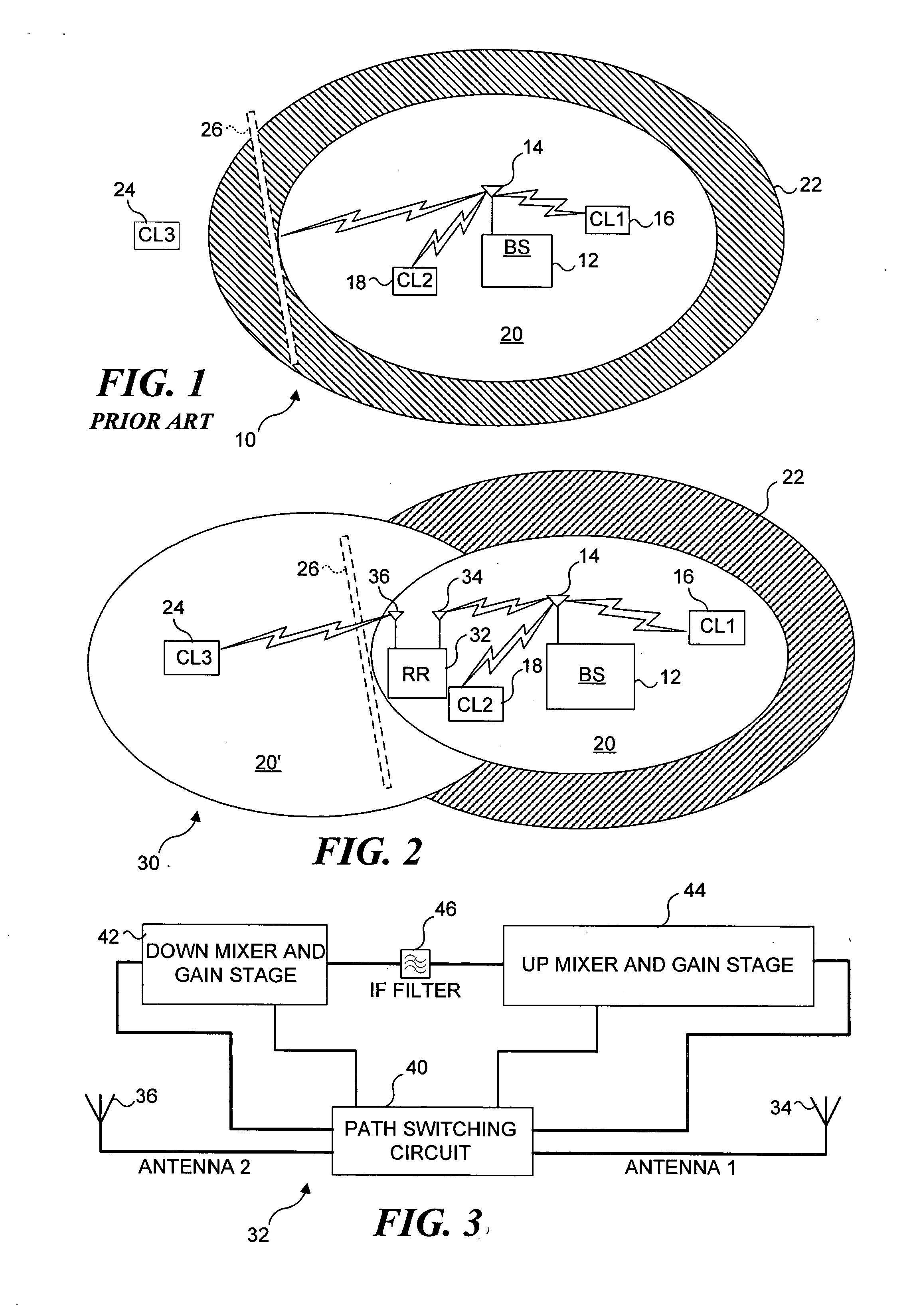Wireless local area network translating bi-directional packet repeater
a bi-directional packet repeater and wireless network technology, applied in transmission monitoring, frequency-division multiplex, dc level restoring means or bias distortion correction, etc., can solve the limitations of the range of communication between wireless devices, the installation of wiring, and the use of devices that can greatly affect the usable range, so as to reduce the available bandwidth, extend the range of wireless communication, and enable communication
- Summary
- Abstract
- Description
- Claims
- Application Information
AI Technical Summary
Benefits of technology
Problems solved by technology
Method used
Image
Examples
Embodiment Construction
[0024] Prior Art Wireless Network Showing Problems Addressed by Present Invention
[0025] An example of a relatively simple wireless network 10 is illustrated in FIG. 1. This Figure is labeled as prior art and illustrates the problems addressed by the present invention. In this simple example, a base station 12 includes an antenna 14 that transmits and receives wireless signals to and from a first client 16 and to and from a second client 18, each client comprising a computing device such as a laptop having an appropriate wireless interface. The base station and clients are all disposed within a region 20 corresponding to the range of acceptable wireless communications between these components. While indicated schematically as an oval, the region in which acceptable wireless communications can occur between such devices is typically not as regular. Also, as is well known, wireless communications between wireless devices can often be carried out at reduced data rates as the distance b...
PUM
 Login to View More
Login to View More Abstract
Description
Claims
Application Information
 Login to View More
Login to View More - R&D
- Intellectual Property
- Life Sciences
- Materials
- Tech Scout
- Unparalleled Data Quality
- Higher Quality Content
- 60% Fewer Hallucinations
Browse by: Latest US Patents, China's latest patents, Technical Efficacy Thesaurus, Application Domain, Technology Topic, Popular Technical Reports.
© 2025 PatSnap. All rights reserved.Legal|Privacy policy|Modern Slavery Act Transparency Statement|Sitemap|About US| Contact US: help@patsnap.com



